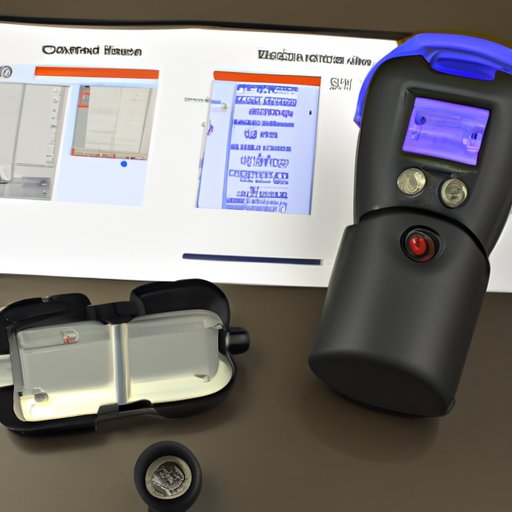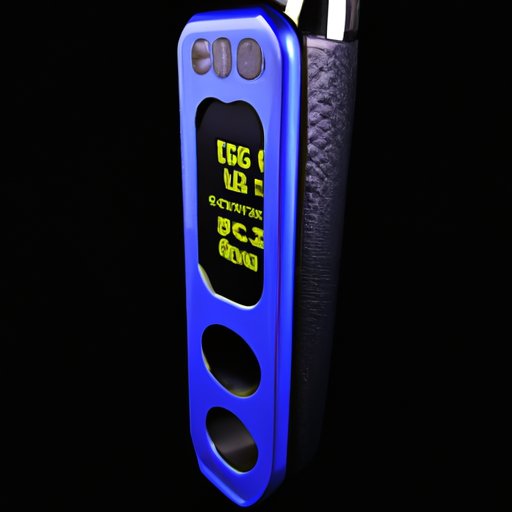Introduction
A breathalyzer is a device used to measure the amount of alcohol in a person’s breath. The purpose of a breathalyzer is to determine if someone is driving under the influence (DUI) of alcohol. Breathalyzers are widely used by law enforcement agencies to detect drunk drivers on the road. In this article, we’ll explore how does a breathalyzer work and what makes it so effective.

Exploring the Science Behind Breathalyzers
Before we dive into the specifics of how breathalyzers work, let’s take a look at the science behind them. When a person drinks alcohol, it is absorbed into their bloodstream through the stomach and small intestine. The body then metabolizes the alcohol, which means it breaks down the alcohol molecules into smaller particles and eliminates them from the body through urine, sweat, and breath.
How much alcohol is in the bloodstream is measured in terms of blood alcohol concentration (BAC). BAC is expressed as a percentage and is an indication of how much alcohol is present in a person’s bloodstream. The legal limit for BAC in most states is 0.08%, which is equivalent to 80 mg of alcohol per 100 ml of blood. If a person’s BAC is higher than 0.08%, they are considered legally intoxicated and are not allowed to drive.
Investigating the Technology of Breathalyzers
Now that we understand the science behind breathalyzers, let’s look at the technology they use. Breathalyzers are equipped with sensors that detect the presence of alcohol in a person’s breath. These sensors rely on a chemical reaction known as oxidation-reduction, or redox. During this reaction, ethanol molecules are oxidized and converted into acetic acid, which is then detected by the sensor.
Breathalyzers come in two main types: fuel cell and semiconductor. Fuel cell breathalyzers use an electrochemical reaction to detect alcohol molecules in the breath. Semiconductor breathalyzers use a semiconductor material such as silicon to detect alcohol molecules. Both types of breathalyzers are accurate and reliable when used correctly.

An Overview of How Breathalyzers Work
Now that we have a better understanding of the science and technology behind breathalyzers, let’s take a look at how they actually work. When a person blows into a breathalyzer, the device captures a sample of their breath and passes it over a sensor. The sensor then detects the amount of alcohol in the breath sample and calculates the person’s BAC. This process usually takes less than a minute.
The results of a breathalyzer test are displayed on a digital display screen. The reading can be either positive (indicating that the person has been drinking) or negative (indicating that the person has not been drinking). It is important to note that breathalyzer results can vary depending on the type of breathalyzer being used and the conditions in which it is being used.
A Closer Look at Breathalyzer Components
Let’s take a closer look at the components that make up a breathalyzer. The first component is the mouthpiece, which is used to capture a sample of the person’s breath. The mouthpiece is usually made of plastic or rubber and is designed to fit comfortably in the person’s mouth.
The second component is the fuel cell, which is responsible for detecting the alcohol molecules in the breath sample. The fuel cell contains two electrodes that react with the alcohol molecules in the breath sample and produce an electrical signal. This signal is then used to calculate the person’s BAC.
The third component is the display screen, which is used to display the results of the breathalyzer test. The display screen typically shows the person’s BAC, as well as any other relevant information such as the time and date of the test.

Examining the Accuracy and Reliability of Breathalyzers
Breathalyzers are generally considered to be reliable and accurate devices, but there are certain factors that can affect their accuracy. For example, if the person taking the test has recently eaten or consumed other substances such as mouthwash, the results may be inaccurate. Additionally, if the breathalyzer is not calibrated properly, the results may be inaccurate.
In addition to accuracy, breathalyzers also have certain advantages and disadvantages. On the one hand, breathalyzers are non-invasive and relatively inexpensive. On the other hand, they can only measure the amount of alcohol in a person’s breath, not in their blood or urine.
Conclusion
In conclusion, breathalyzers are a useful tool for measuring the amount of alcohol in a person’s breath. They use a combination of science, technology, and components to accurately measure a person’s blood alcohol concentration. Although breathalyzers are generally considered to be reliable and accurate devices, there are certain factors that can affect their accuracy. Ultimately, breathalyzers are an important tool for law enforcement officers to detect drunk drivers on the road.
(Note: Is this article not meeting your expectations? Do you have knowledge or insights to share? Unlock new opportunities and expand your reach by joining our authors team. Click Registration to join us and share your expertise with our readers.)
